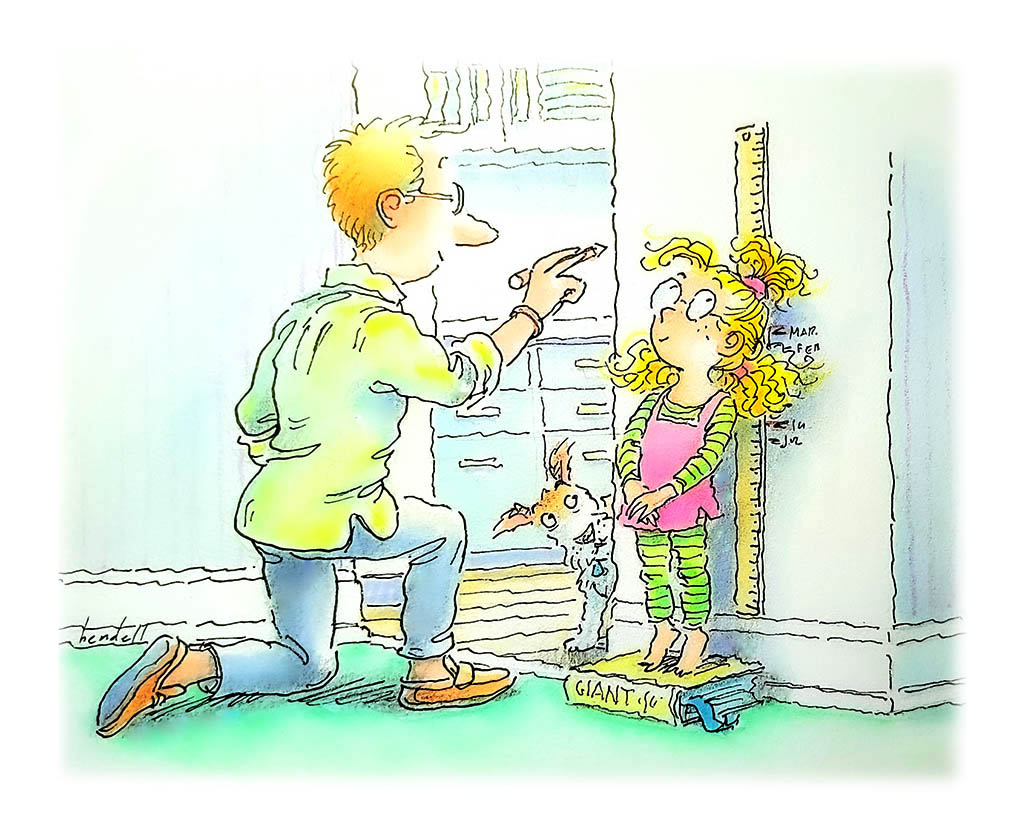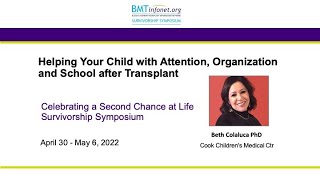Late Effects in Children after a Bone Marrow Transplant
Children who have been through a bone marrow transplant are at risk of developing the same long-term side effects as adults. But unlike adults, children's bodies are still developing and they may face additional challenges.
 Growth Problems
Growth Problems
Many children achieve a normal height after transplant but it may be at the low end of the normal range.
Others experience slow or stunted growth. he problem occurs most often in children who received total body irradiation (TBI). A thyroid hormone deficiency can also affect your child’s growth and usually does not show up until two or more years after transplant.
If your child was age 10 or less at the time of transplant, growth hormone replacement therapy may help spur growth.
Watch a video about growth issues.
Learning and Organizational Challenges
Many children do well in school after transplant. However, some children experience attention, organizational challenges, and learning difficulties and will need special accommodations at school.
Learning problems are more common among children transplanted at an early age and those who had total body irradiation. Problems may include:
- difficulty remembering things
- poor eye-hand coordination
- attention deficit disorder
- problems focusing, concentrating and setting priorities
A pediatric neuropsychologist can test your child to determine if a learning disability exists and the type of school accommodation your child needs. Similar tests help teens and young adults identify types of work that match their learning and performance skills.
Testing should be done one year after transplant and then when the child enters first grade, middle school, and high school.
Watch a video about cognitive challenges in children after transplant.
Puberty and Fertility
Most girls who are transplanted during or after puberty will be infertile. Boys who are transplanted before puberty typically maintain normal testosterone levels but most will be infertile.
Oocyte and embryo cryopreservation are available for females who have initiated puberty before transplant, and who wish to preserve their family-building options after transplant. For male patients, sperm preservation is the standard of care.
Watch a video about fertility preservation.
Heart Health
Most children who had a transplant are at risk of developing heart problems earlier than the general population. An echocardiogram
every one to five years is recommended to monitor for heart problems.
Dental Problems
Children transplanted before the age of five may experience significant dental problems, such as loose teeth, tooth loss, and dry mouth, and may be unable to wear braces. Ideally, they should be followed by a dentist who is experienced in treating children who’ve been exposed to high-dose chemotherapy or total body irradiation.
Long-Term Follow-Up Guidelines
The Children's Oncology Group has created long-term follow-up guidelines for survivors of childhood, adolescent and young adult cancers.
The guidelines are appropriate for children who had a diagnosis other than cancer and who underwent a transplant as well.
Transitioning to Adult Care
After transplant, pediatric patients may be at risk for complications that can arise years later when they are adults. It is important to begin early familiarizing children with how to manage their healthcare. Teaching them how to schedule doctor appointments, remember when to take medications, and phone the healthcare team will help prepare them to assume total responsibility for their care when they are adults.
When they are ready to transition to adult healthcare providers, children should have a clear understanding of their prior disease and therapies, and a survivorship care plan that outlines the monitoring they need as adults to catch potential complications.




